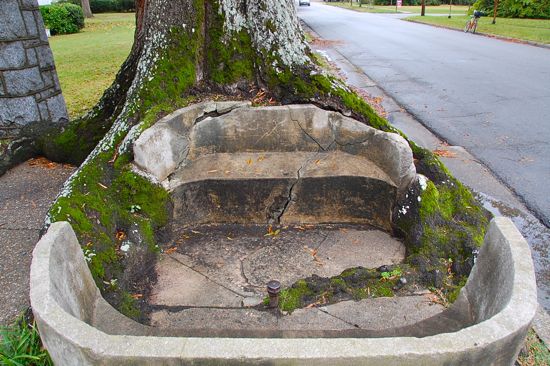It's Monday April 29, 2024
News From The Village Updated Almost Daily
November 5, 2010
One of Oriental’s oldest and most familiar sights — the willow oak on South Avenue near the Stallings House — will not be around much longer.
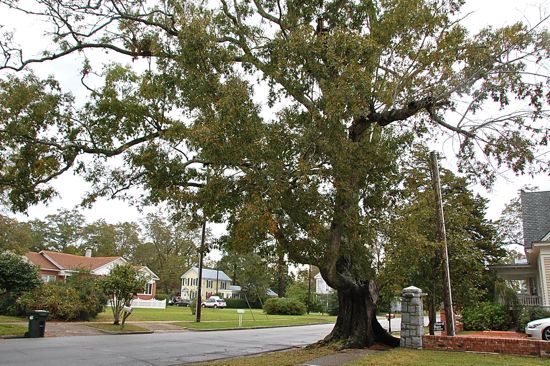 This old oak will be part of the South Avenue scene for only a few days more.
This old oak will be part of the South Avenue scene for only a few days more.The oak’s age is not quite clear – yet – but along with the cement bench its roots have grown around, it has become a landmark over the years. More recently, though, in the view of the Town, the tree has become a potential liability, which is why a crew from Pamlico Tree Care has been hired to take it down on November 8.
A part of the tree, literally, is the cement bench that has been enveloped by the oak’s roots. The bench had been built decades ago around an artesian well (which has long since been capped.) The tree has outgrown its space says the Oriental Tree Board.“Unfortunately, the tree is dying and becoming dangerous,” says Bob Miller, head of the Oriental Tree Board. “This past summer two large branches fell into the street on days with only light to moderate wind.”
No one was hurt, Miller says, but adds, “I can only imagine what would have happened if that had occurred during CroakerFest.” It’s possible, he says, that early summer thunderstorms could have cracked those branches that eventually fell.
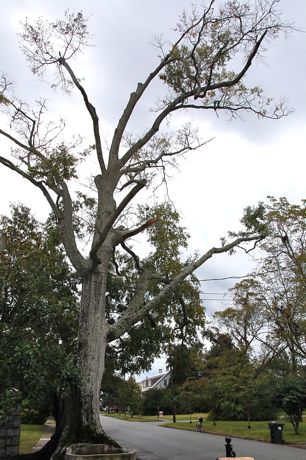 Silhouette over South Avenue.
Silhouette over South Avenue.Miller says that the Tree Board has had dead branches taken off over the years and has otherwise been monitoring the willow oak with, as he puts it, “the understanding the time for the tree is limited.” Miller adds that there is decay throughout the tree. “The lower crown looks fine, but the upper portion is dying back severely.”
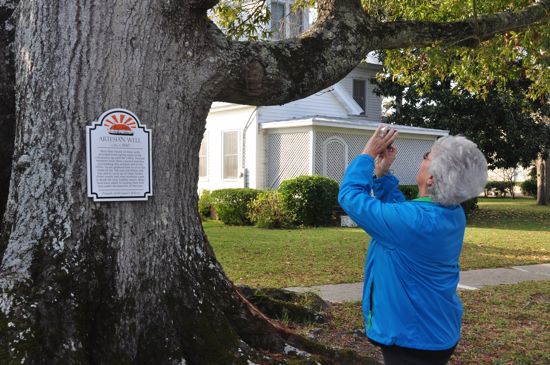 Get your photos while you can. A tourist from a cruise ship snapped a picture this past week.
Get your photos while you can. A tourist from a cruise ship snapped a picture this past week.Part of the challenge for the oak, Miller says, is that it has “outgrown the available soil and now is in decline.” The tree is surrounded on three sides by asphalt street or concrete sidewalk. Also, on its eastern side, in the nook of its large roots, sit the cement benches that at one time surrounded an artesian well. Another root sprawls like a shoulder and arm across the sidewalk. High stepping is necessary.
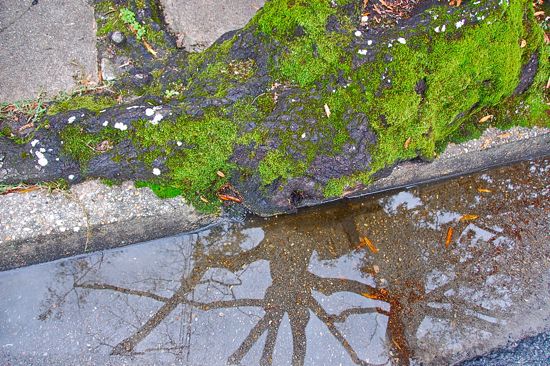 Moss on the trees roots and a reflection of the willow oak’s highest branches in a puddle at curbside.
Moss on the trees roots and a reflection of the willow oak’s highest branches in a puddle at curbside.[page]
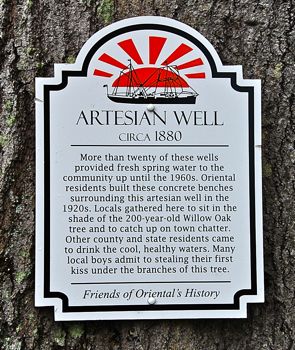 Though the sign puts the tree in the two century category, a count of rings will tell for sure.
Though the sign puts the tree in the two century category, a count of rings will tell for sure.A sign on the tree suggests it is 200 years old but that’s not a certainty. “We won’t know until we can count the rings. My guess is that it isn’t that old. Open grown trees grow much faster than forest trees because they get more light. Because of its location I expect it was planted by a resident, and the town isn’t anywhere near 200 years old.”
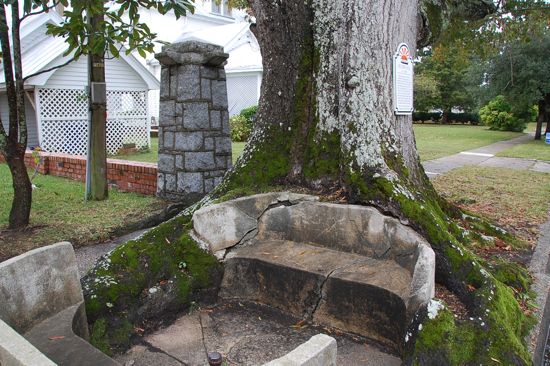 The concrete benches will stay but will no longer be shaded by the willow oak.
The concrete benches will stay but will no longer be shaded by the willow oak.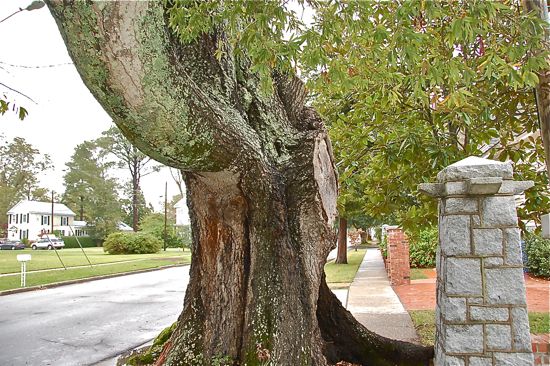 The tree has been cut before, notably, a section that extended over the sidewalk.
The tree has been cut before, notably, a section that extended over the sidewalk.The Oriental History Museum says that it would like a cross section of the tree. Some have suggested using the rings as a backdrop to point out events in the town’s history.
Bob Miller says some of the tree will be left in place. “We plan to leave a tall stump standing as a memorial. If someone wants to carve something out of it that would be nice. Flowers would be nice as well, but someone would have to agree to water them.”
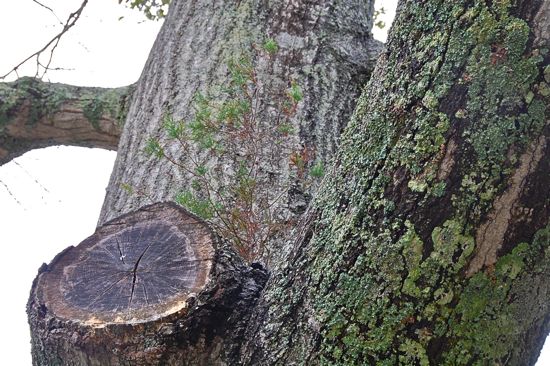 More than one tree will be coming down: the large willow oak, and the cedar tree that has sprung up in an upper crotch of the oak.
More than one tree will be coming down: the large willow oak, and the cedar tree that has sprung up in an upper crotch of the oak.
